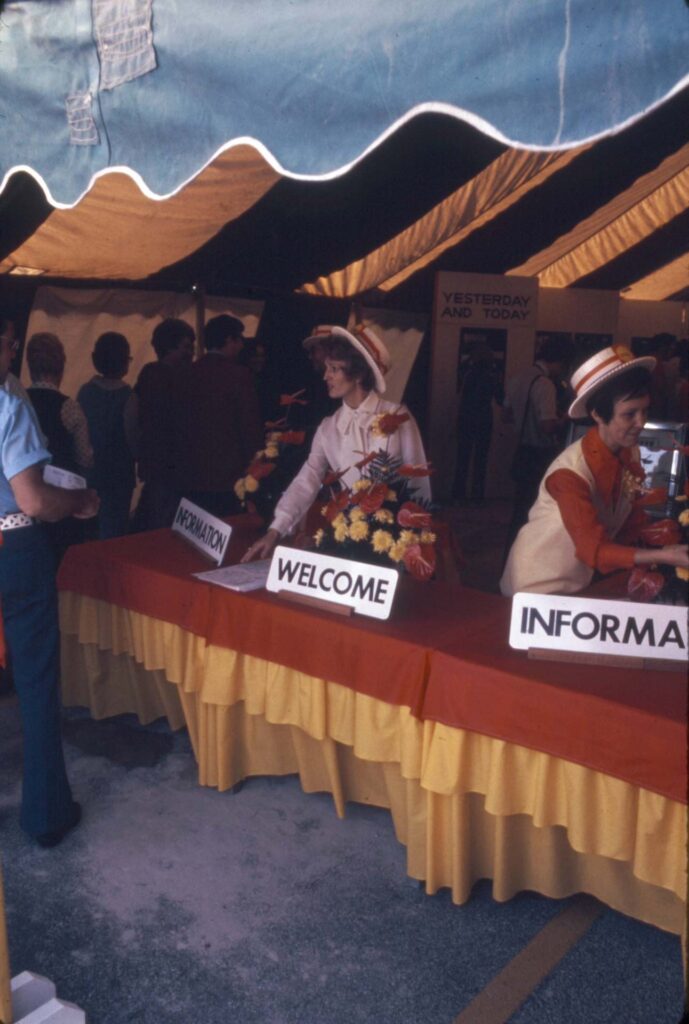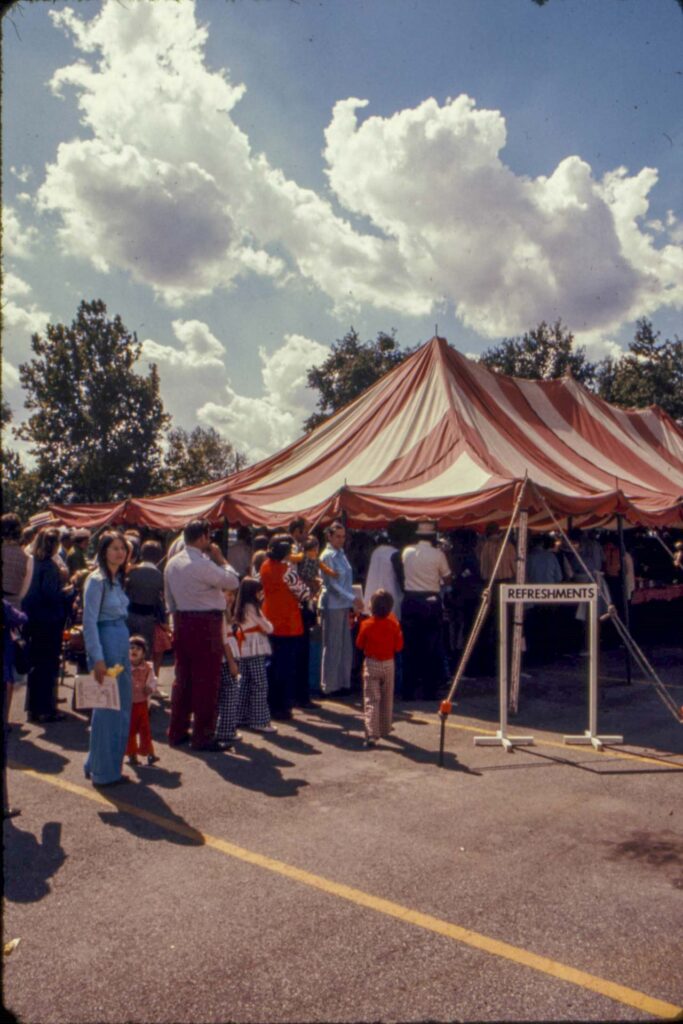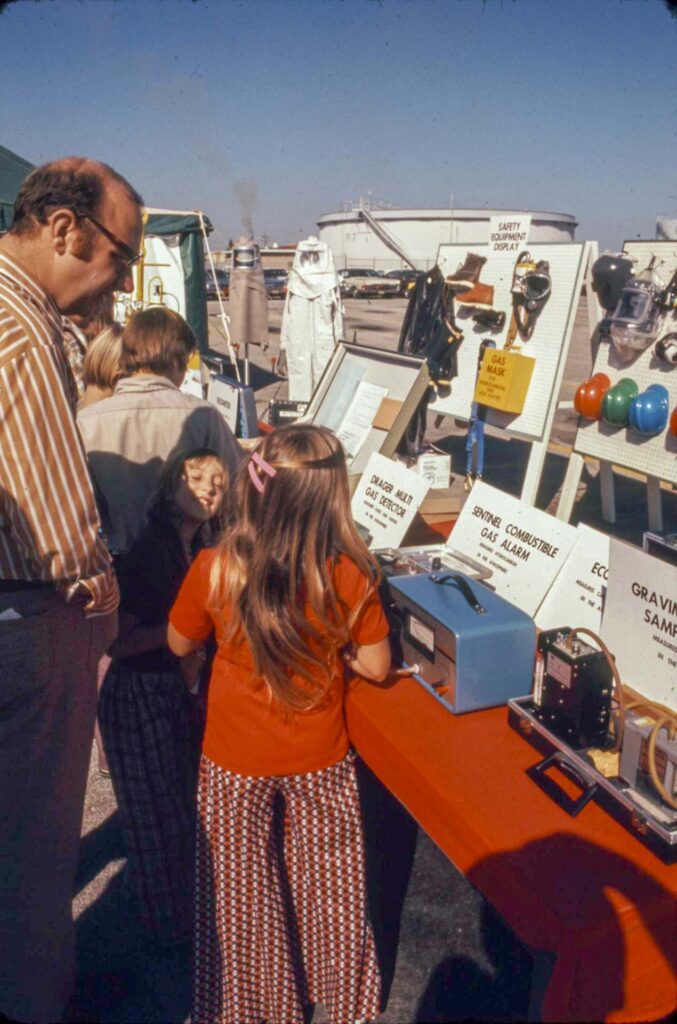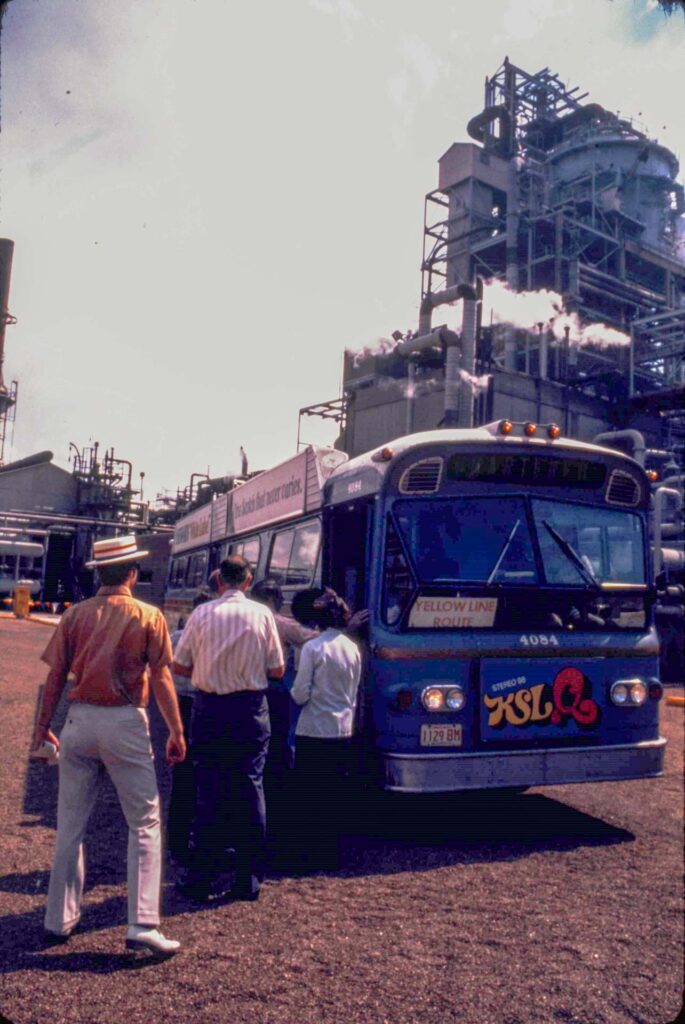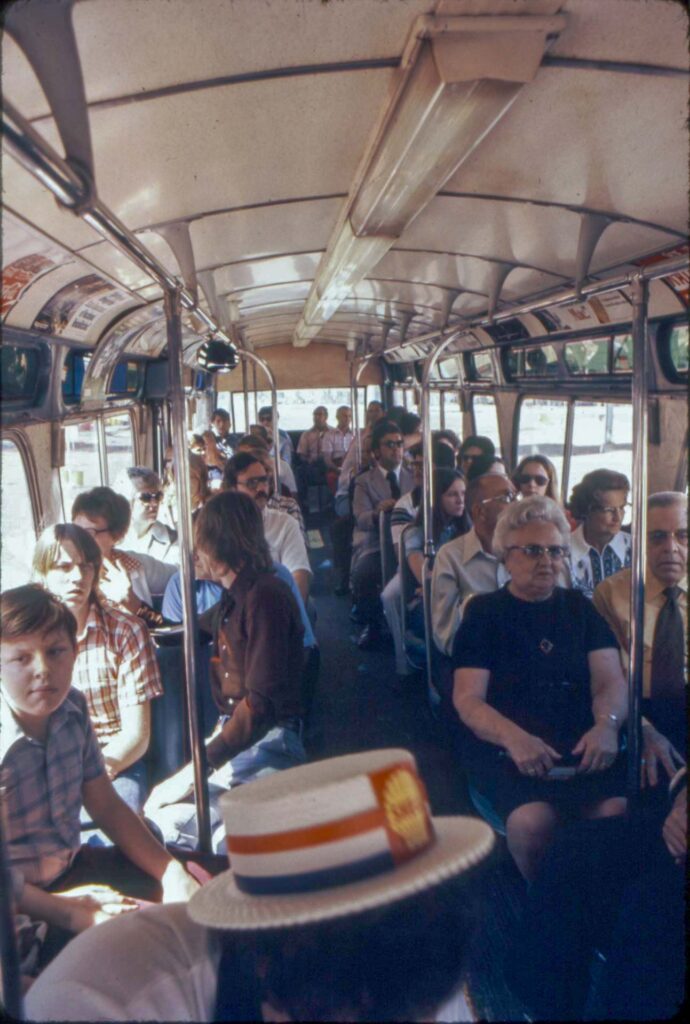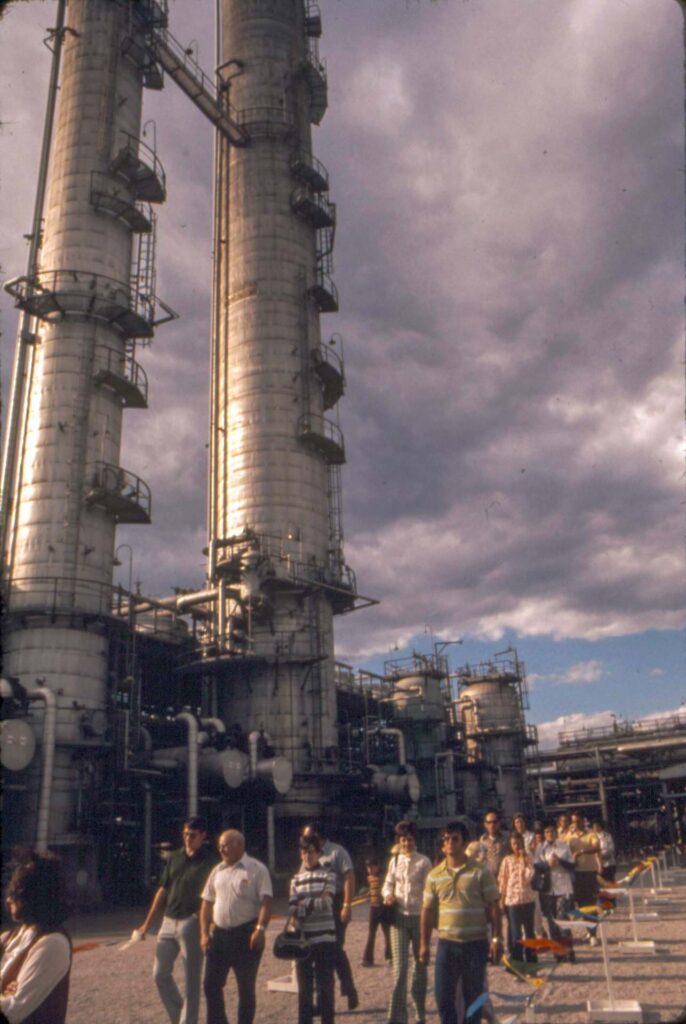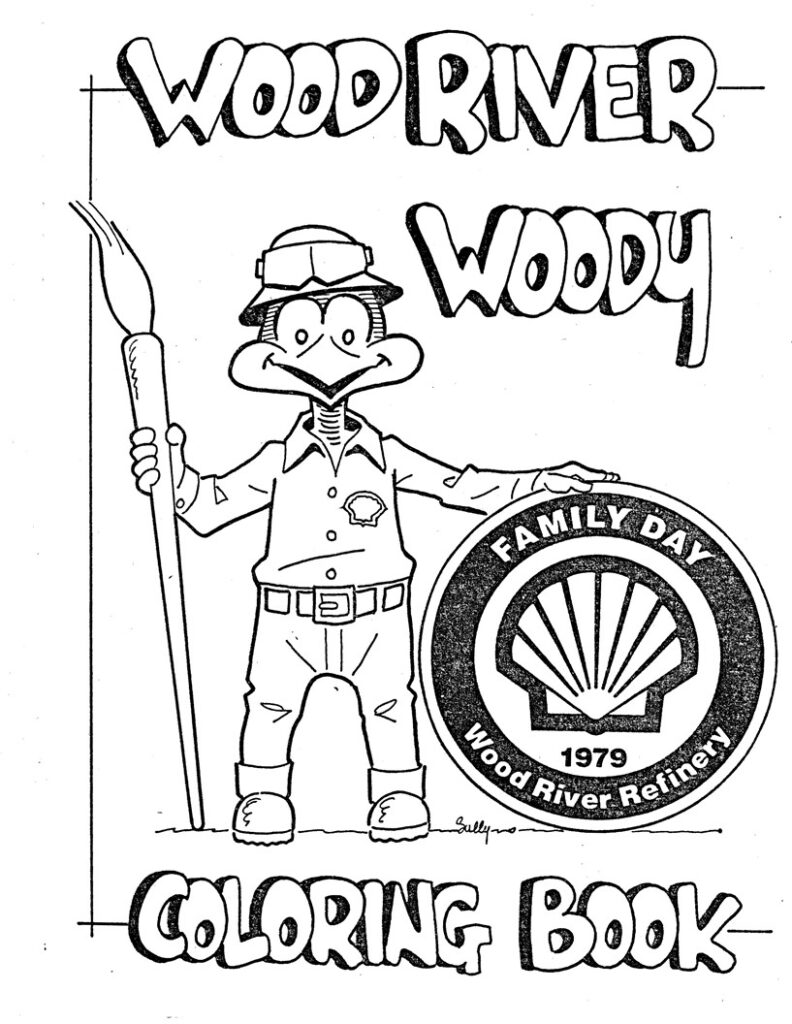The Energy Crisis
[This page is under construction]
The Great Flood of 1973 partially submerged the refinery’s Mississippi River docks, requiring their replacement with taller facilities (which would turn out fortunate). The 1973 OPEC crude oil embargo and the 1979 Iranian Revolution resulted in the cost of crude oil purchased by WRR to increase by a factor of ten. But gasoline demand remained high and by 1979 refinery capacity had increased to 287,000 barrels per day. The addition of catalytic converters to automobiles beginning in 1975 required phasing out tetraethyl lead as an octane additive, which in turn required enhanced refining to make up the difference. Shell purchased the Anlin facility, annexing it to the refinery, and continued processing sulfur removal streams from the Shell, Amoco, and Clark refineries. The Wood River Woody safety mascot was introduced, drawn by a talented refinery draftsman. Employee families enjoyed elaborate Family Day celebrations in 1974 & 1979.
